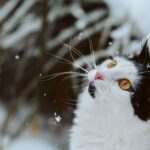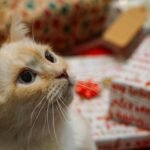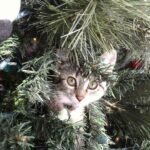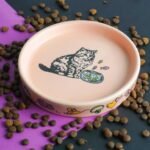As the temperature rises and we’re reaching for that extra glass of iced tea, you might notice your feline friend making more frequent trips to their water bowl. This observation isn’t just your imagination, there’s real science behind why our cats behave differently when the mercury climbs.
Understanding your cat’s hydration needs during warmer months is crucial for their health and wellbeing. Whether you have an adventurous outdoor explorer or a comfortable indoor companion, seasonal changes affect how much water your cat needs and wants to drink.
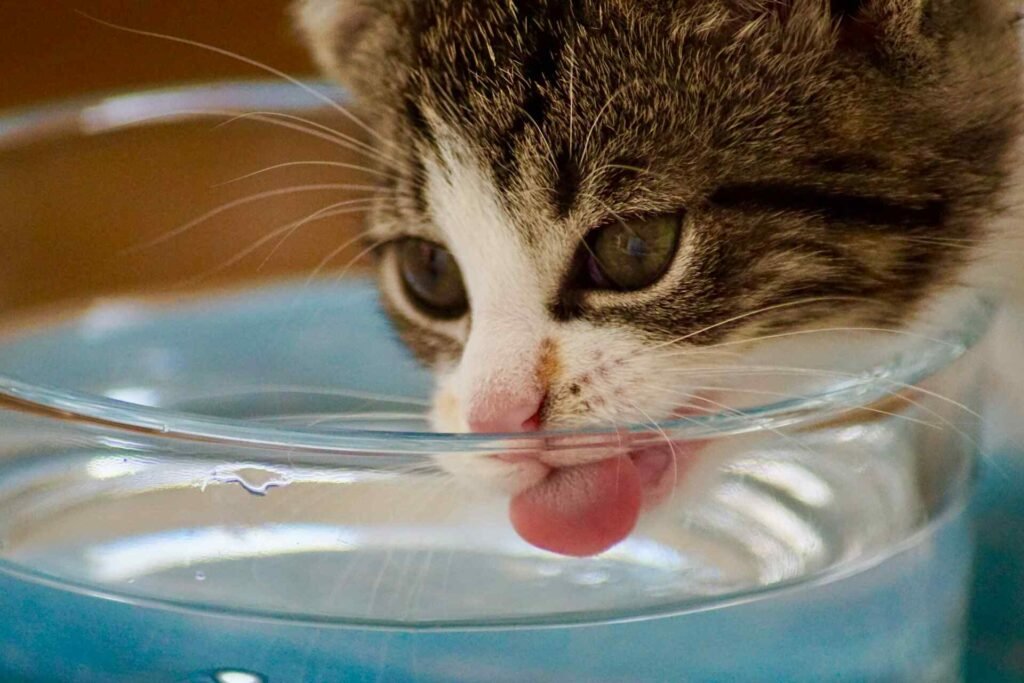
Why Do Cats Drink More Water in Hot Weather?
The simple answer is that cats are remarkably similar to humans when it comes to thermoregulation. When temperatures soar, their bodies work overtime to maintain a safe internal temperature, and this process requires additional hydration.
Unlike dogs, cats don’t pant heavily to cool down. Instead, they rely primarily on other cooling mechanisms, including increased water consumption. Their kidneys work harder during hot weather to concentrate urine and conserve body fluids, while their overall metabolism adjusts to cope with the temperature stress.
Think of it like this: your cat’s body is essentially running a more intensive cooling system during summer, and that system needs extra fuel in the form of H2O. This natural response helps prevent overheating and maintains their body’s delicate fluid balance.
The fascinating part is how quickly cats can adapt their drinking habits. Many pet parents notice these changes within just a few days of a heat wave arriving. This rapid adjustment shows just how finely tuned their survival instincts really are.
Indoor vs. Outdoor Cats: Different Hydration Needs
Indoor Cats and Summer Hydration
Do indoor cats drink more water in the summer? Absolutely, and sometimes even more dramatically than their outdoor counterparts. Indoor environments can become surprisingly warm, especially in homes without adequate air conditioning or proper ventilation.
Indoor factors that increase water needs:
- Air conditioning systems that create dry air
- Warm surfaces like sunny windowsills where cats love to lounge
- Reduced air circulation compared to outdoor breezes
- Heat buildup from electronics and appliances
Indoor cats often surprise their owners with how much their drinking habits change. We’ve seen cases where typically finicky drinkers become enthusiastic water consumers once summer arrives. This change can be particularly noticeable in apartments or homes with large windows that create greenhouse effects.
The advantage indoor cats have is consistent access to fresh, clean water. However, they also depend entirely on their human companions to ensure their water supply meets their increased summer demands.
Outdoor and Indoor-Outdoor Cats
Cats with outdoor access face different challenges. They have more opportunities to find natural water sources, but they also encounter higher temperatures, direct sunlight, and increased activity levels that boost their hydration needs.
Outdoor cats may drink from puddles, streams, or other natural sources, but these aren’t always clean or consistently available. During drought conditions or extremely hot spells, outdoor water sources can become scarce or contaminated.
Recognizing the Signs: How Much Is Too Much?
While increased water consumption during summer is normal, it’s important to distinguish between healthy seasonal adjustment and potential health concerns.
Normal summer drinking patterns include:
- Gradual increase in water bowl visits
- Preference for cooler water
- Drinking smaller amounts more frequently
- Seeking out alternative water sources like dripping faucets
When to be concerned:
- Sudden, dramatic increases in drinking (more than doubling overnight)
- Excessive drinking combined with increased urination
- Drinking accompanied by lethargy or appetite changes
- Obsessive water-seeking behavior
Keeping your cat’s food and water bowls clean becomes even more critical during summer months, as bacteria multiply faster in warm conditions.
Creating the Perfect Summer Hydration Station
Water Bowl Placement and Type
Strategic placement of water sources can encourage healthy drinking habits. Consider creating multiple hydration stations throughout your home, especially in cooler areas where your cat likes to rest during hot days.
Optimal water station features:
- Ceramic or stainless steel bowls that stay cooler
- Wide, shallow bowls that don’t touch whiskers
- Placement away from direct sunlight
- Distance from food bowls (many cats prefer this separation)
Some cats develop preferences for specific types of water during summer. Fresh, cool water often becomes more appealing than room temperature water. Adding ice cubes occasionally can provide both enrichment and extra cooling, though not all cats appreciate this addition.
Water Fountain Benefits
Water fountains can be particularly beneficial during summer months. The continuous circulation keeps water cooler and more oxygenated, while the flowing water often appeals to cats’ natural preferences. The sound and movement can also encourage cats who might otherwise forget to drink adequately.
Summer Hydration Strategies That Actually Work
Temperature Matters
Just as we prefer cold drinks on hot days, many cats develop a preference for cooler water during summer. Refreshing their water bowl with cool (not ice-cold) water several times daily can encourage increased consumption.
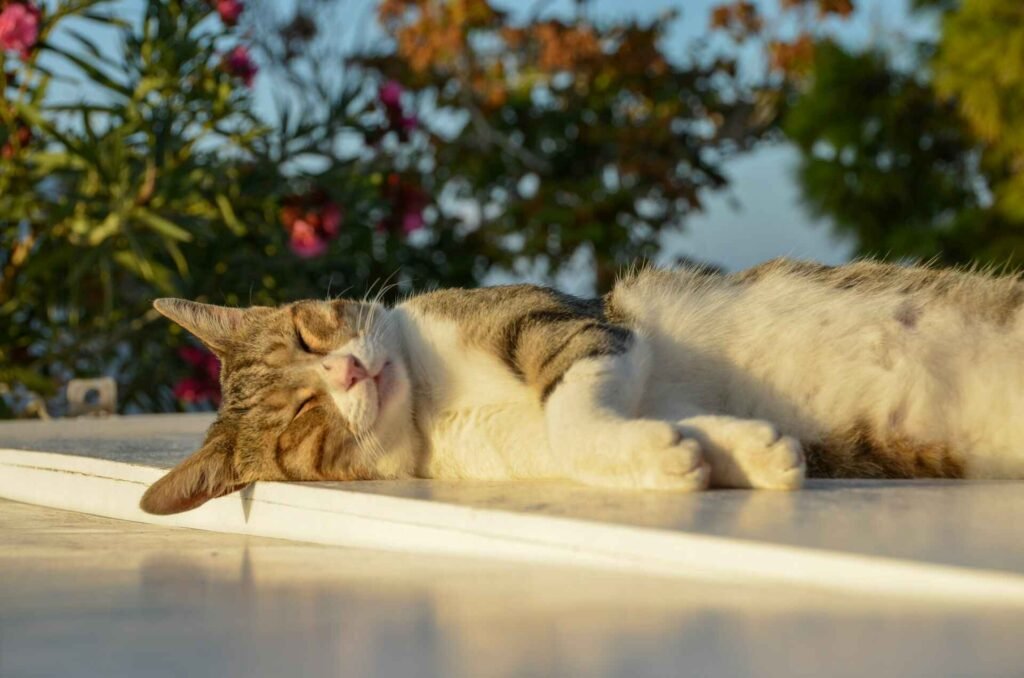
Some cats enjoy drinking from the faucet during summer, possibly because the water is cooler and fresher than what’s been sitting in their bowl. If your cat shows this preference, consider incorporating supervised faucet access into their daily routine.
Multiple Water Sources
Cats can be surprisingly particular about their drinking spots, and their preferences might shift during warmer weather. They often seek out cooler areas of the house, so placing water bowls in these locations can encourage proper hydration.
Creating a “water trail” throughout your home ensures your cat always has convenient access, regardless of where they’re spending their time. This is particularly helpful for older cats or those who might be less mobile during hot weather.
Wet Food Advantages
Wet food becomes an excellent hydration tool during summer months. The high moisture content can contribute significantly to your cat’s daily fluid intake, providing a safety net for cats who might not drink enough water independently.
Consider slightly increasing wet food portions during heat waves, or adding a small amount of warm water to dry food to create a gravy-like consistency that many cats find appealing.
Common Summer Hydration Mistakes to Avoid
Assuming All Cats Will Self-Regulate
While cats are generally good at managing their water intake, some individuals need extra encouragement, especially during temperature extremes. Senior cats or those with underlying health conditions may struggle more with temperature regulation and hydration balance.
Ignoring Water Quality
Summer heat can affect water quality more quickly than during cooler months. Stagnant water develops bacteria faster, and outdoor water sources may become contaminated or dry up entirely. Regular water bowl cleaning becomes even more critical during warm weather.
Overlooking Environmental Factors
Air conditioning, while helpful for cooling, can create very dry indoor environments. Fans, while providing air circulation, can also increase evaporation from water bowls. These factors may require adjustments to your hydration strategy.
Health Considerations and When to Consult Your Vet
Normal vs. Concerning Changes
Most cats will naturally increase their water consumption by 10-25% during hot weather. This gradual adjustment usually happens over several days and corresponds with rising temperatures.
However, sudden or extreme changes warrant veterinary attention. If your cat’s drinking habits change dramatically overnight, or if increased drinking is accompanied by other symptoms, professional evaluation is important.
Special Considerations for Different Cat Types
Senior cats may have reduced kidney function or other health issues that affect their ability to regulate hydration effectively. They often need extra monitoring during summer months.
Long-haired breeds typically need more water during hot weather due to their increased heat retention. Cats with flat faces may also struggle more with heat regulation and require additional hydration support.
Cats with chronic conditions such as kidney disease or diabetes need special attention to their hydration needs during summer, often requiring veterinary guidance for seasonal adjustments.
Creative Ways to Encourage Summer Water Consumption
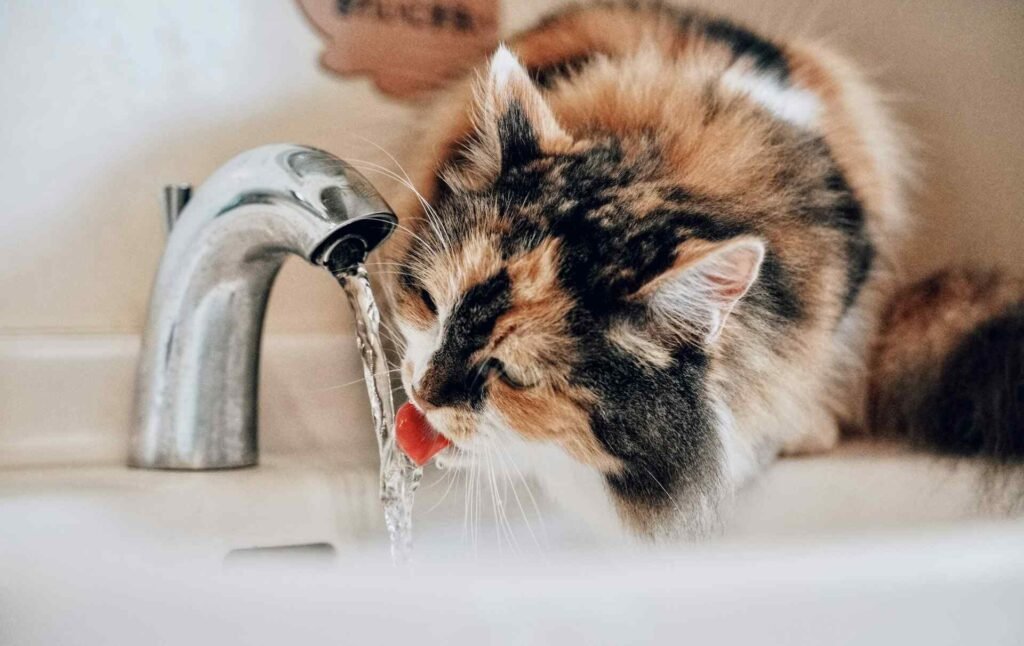
Environmental Enrichment
Some cats become more active during cooler evening hours in summer, which can increase their hydration needs. Providing engaging activities during these times, combined with readily available water, supports both their physical and mental wellbeing.
Flavor Enhancement
Adding small amounts of low-sodium chicken broth to water can make it more appealing during summer months. Bone broth designed for pets provides both hydration and additional nutrients, though it should supplement, not replace, regular water intake.
Ice Cube Games
Some cats enjoy playing with ice cubes, which provides entertainment while encouraging hydration. Drop a few cubes in their water bowl or place them in a shallow dish for interactive play that results in water consumption.
Seasonal Comparison: Summer vs. Winter Hydration Needs
| Season | Average Daily Water Intake | Key Factors | Special Considerations |
|---|---|---|---|
| Summer | 4-6 oz per 5 lbs body weight | Heat, increased panting, dry air | More frequent bowl refills, cooler water preferred |
| Winter | 3-4 oz per 5 lbs body weight | Dry indoor heating, less activity | Heaters can create dry air, may need encouragement |
| Spring/Fall | 3.5-5 oz per 5 lbs body weight | Moderate temperatures, variable weather | Transitional period, monitor for changes |
This comparison helps illustrate why summer hydration requires more attention. The increased needs aren’t just about preference, they’re about physiological necessity.
Creating Year-Round Healthy Hydration Habits
Consistency is Key
Rather than making dramatic changes only during summer, establishing good hydration practices year-round sets your cat up for success when temperatures rise. Regular bowl cleaning, fresh water daily, and monitoring consumption patterns creates a foundation for healthy seasonal adjustments.
Monitoring Tools
Keep a mental note of your cat’s normal drinking patterns during moderate weather. This baseline helps you recognize when summer increases are within normal ranges versus when they might indicate health concerns.
Consider taking photos of water levels at consistent times if you’re concerned about consumption changes. This simple tracking method can provide valuable information for veterinary consultations if needed.
Frequently Asked Questions
How much more water should my cat drink in summer?
Most cats naturally increase their water intake by 10-25% during hot weather. For an average 10-pound cat, this means going from about 7-8 ounces daily to 8-10 ounces during summer months. The increase should be gradual and correspond with temperature changes.
Is it normal for my indoor cat to suddenly drink more water when it gets hot?
Yes, this is completely normal. Indoor cats often show more dramatic changes in drinking habits during heat waves because they’re entirely dependent on their indoor environment for temperature regulation. Ensuring their environment stays comfortable helps moderate these changes.
Should I add anything to my cat’s water during summer?
Plain, fresh water is best for most cats. However, you can occasionally add small amounts of low-sodium broth or wet food liquid to encourage drinking. Avoid adding anything sweet, caffeinated, or heavily flavored.
How do I know if my cat is drinking too much water in summer?
While increased drinking is normal, be concerned if your cat suddenly doubles or triples their intake overnight, drinks obsessively, or shows other symptoms like excessive urination, lethargy, or appetite changes. Gradual increases over several days are typically normal seasonal adjustments.
Can I give my cat ice water in summer?
Cool water is fine, but avoid ice-cold water which can cause stomach upset. Room temperature to slightly cool water is ideal. Some cats enjoy playing with ice cubes, but this should be supervised and not their primary water source.
Do different cat breeds have different summer water needs?
Long-haired breeds, flat-faced cats, and larger cats often need more water during hot weather due to their physiology. However, individual cats within breeds can vary significantly, so monitoring your specific cat’s needs is most important.
Conclusion: Keeping Your Feline Friend Happy and Hydrated
The beautiful thing about cats is how they naturally adapt to seasonal changes when we provide the right support. By ensuring fresh, accessible water and paying attention to their changing needs, we’re helping them navigate summer safely and comfortably.
Remember, every cat is an individual. While some might dramatically increase their water consumption at the first sign of warm weather, others might make more subtle adjustments. The key is knowing your cat’s normal patterns and being ready to support their hydration needs as the seasons change.
So the next time you notice your feline friend making extra trips to their water bowl during a heat wave, smile knowing they’re just being the smart, adaptable creatures they’ve always been. And maybe grab yourself a cold drink too, staying hydrated is important for all of us during those warm summer days!
Looking for more? Explore our Cat Health section for more posts like this, visit the Blog for fun and insightful reads, or browse our full Cat Category for everything feline-related, from care to comfort.
Disclaimer: This article is for informational purposes only and does not substitute for professional veterinary advice. Always consult your veterinarian for diagnosis and treatment tailored to your cat’s individual needs. Please verify current product information directly on the retailer’s site before purchasing.
References
- Giselle Carter (2023). Beat the Heat: Your Guide to Pet Hydration. https://ovcpetnutrition.uoguelph.ca/2023/07/03/beat-the-heat-your-guide-to-pet-hydration/
- Ian DeStefano (2023). Keeping Pets Cool in the Summer. https://vet.tufts.edu/news-events/news/keeping-pets-cool-summer
Check out our most recent articles!
- Cats and Snow: Why Some Love It and Others Don’tSnow isn’t just uncomfortable for many cats, it’s a complete sensory overload. From cold paw pads to wet fur and changed landscapes, winter challenges feline comfort in unexpected ways. Learn how to recognize stress signals and create cozy alternatives for snow-averse cats.
- Christmas Names for Cats: From Classic to Creative Holiday IdeasNaming your holiday cat goes beyond festive fun. Discover why Christmas-inspired names age beautifully, spark instant connections with fellow pet lovers, and capture the warmth cats bring to our homes during the most magical season of the year.
- How to Keep Your Cat From Drinking Christmas Tree WaterYour cat’s obsession with Christmas tree water isn’t just annoying, it’s genuinely dangerous. From harmful bacteria to toxic additives, that festive reservoir poses real health risks. Discover practical solutions that protect your pet without sacrificing holiday cheer.
- Best Cat Toys for Christmas: The Ultimate Guide to Holiday JoyNot all Christmas gifts end up under the tree, some get batted across the floor at 3 AM. Explore the wonderful world of holiday cat toys that match your feline’s personality, from plush companions for cuddlers to high-tech options for the eternally energetic.
- Are Fake Christmas Trees Safe for Cats? A Holiday Safety GuideThat beautiful Christmas tree might look festive to you, but to your cat, it’s an irresistible climbing gym with built-in toys. Find out whether artificial trees are truly safer for cats and discover the hidden dangers lurking in your holiday decorations.
- The Best Christmas Gifts for Cats That’ll Actually Get Used (Not Ignored)Not all Christmas gifts land on the nice list with our feline friends. Discover which presents actually spark joy in cats and which ones end up gathering dust under the couch by New Year’s Day.
- Do Cats Eat Less in Winter? How Cold Weather Affects Your Cat’s AppetiteWinter brings more than just cold weather, it can completely change your cat’s eating habits. From bored indoor cats to outdoor ferals fighting to survive, discover what’s really driving those appetite changes and how to respond appropriately.
- Are Humidifiers Good for Cats? A Complete Safety & Health GuideNot all humidifiers are cat-safe, and some common practices could be toxic. Learn why cool mist beats warm mist, why essential oils are dangerous for felines, and how proper humidity levels between 30-50% support your cat’s breathing and coat health.
- How to Protect Leather Furniture From Cats (Without Losing Your Mind)Leather furniture and cat claws seem like natural enemies, but they don’t have to be. Learn why your cat is drawn to that expensive couch in the first place, and how simple redirects can save your furniture while keeping your cat’s natural behaviors satisfied.
- The Best Material for Cat Bowls: Protect Your Cat from BacteriaStainless steel, ceramic, or plastic, which material keeps your cat healthiest? We break down the science behind cat bowl materials, revealing why some harbor bacteria and others last decades without compromising your feline’s wellbeing.

